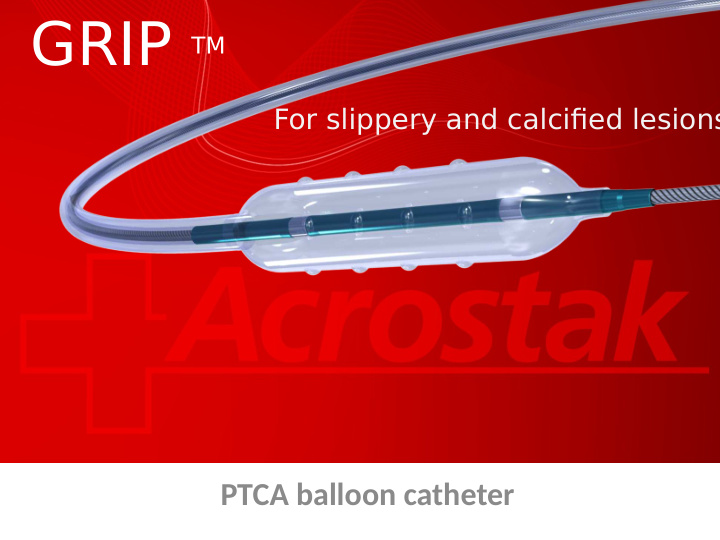



GRIP TM For slippery and calcifjed lesions PTCA balloon catheter
Anti-Slippery Efgect Workhorse Workhorse GRIP GRIP Before After In vitro tests show that GRIP TM remains stable in the lesion while workhorse balloons slip at pressure above 10atm
GRIP TM Treatment of intra-stent restenosis, heavily calcifjed lesions , stent post-dilation 4 lines of knobs anchor the balloon to the lesion • Unsurpassed stability For an efgectjve & safe dilatjon of the stenosis • Reduced risk of dissection At the stent margins of ISR & delicate areas (bifurcatjons, ostjal & short calcifjed lesions)
GRIP TM Stent post-dilation 4 lines of knobs to crush the hard plaque • Optjmal plaque crushing for superior post-dilatjon • Minimize balloon stjfgness and preserve steerablity within curved vessels
GRIP TM Outstanding Material Strength • Ultra-Resistant to puncture • High Pressure balloon with RBP of 22 atm
GRIP TM Ordering informatjon Diameter (mm) Length (mm) 2.5 8,12,16 3.0 8,12,16 3.5 8,12,16 4.0 8,12,16
GRIP T estimony “ About 80% of all restenotjc lesions are focal … they are very slippery lesions, very hard ” “ About 100% of all restenotjc lesions Dr. Stéphane Cook are treated [here] with the GRIP Specialist in Cardiology University Hospital Fribourg balloon” “ The use of GRIP balloon with its special knobs […] gives the opportunity to stabilize very nicely the balloon within the restenotjc lesion and to give enough pressure on this restenotjc lesion ” “ The GRIP balloon […] has a very nice crossing profjle , that’s very important in restenotjc lesions” *Extract of interview with dr. Cook dated 23 rd February 2010, Switzerland
Recommend
More recommend